L-8: Difference between revisions
Pbcjohnston (talk | contribs) No edit summary |
Pbcjohnston (talk | contribs) mNo edit summary |
||
| (10 intermediate revisions by the same user not shown) | |||
| Line 1: | Line 1: | ||
[[File:0804804.jpg|left| | [[File:L-Boat Header 1.jpg]] | ||
< | [[File:0804804.jpg|left|500px]] | ||
<div style="text-align: justify;"><span style="color:#00008B">L-8 was a Lake design built under license at the Portsmouth Navy Yard in Kittery, ME. It is shown here on April 13, 1916 on the building ways in the old Franklin Shiphouse. It was the first submarine built at a U.S. government owned shipyard. The USN was trying to gain experience in building submarines so that some level of competition could be provided to Electric Boat and Lake. Simon Lake desperately needed the cash the license provided his company, and the Navy gained valuable experience in the complicated art of building submarines. | |||
<small>NHHC photo NH 46541 courtesy of the Naval History & Heritage Command.</small> | |||
[[File:Red bar sub.jpg]] | |||
[[File: | |||
[[File:L-8-2.jpg|left| | [[File:L-8tt-b.jpg|left|500px]] | ||
<div style="text-align: justify;"><span style="color:#00008B">L-8 was armed with four 18-inch torpedo tubes in the bow. Her primary weapon was the Bliss-Leavitt Mk 6 or Mk 7 torpedo. She could carry eight of the weapons, four in the tubes with one reload each. The large handwheels on each tube opened the breech door. The levers on each tube side would open the outer muzzle doors once the tube was flooded and prepared to fire. | |||
<small>Photo from the private collection of Ric Hedman.</small> | |||
[[File:Red bar sub.jpg]] | |||
[[File:L8contrl.jpg|left|500px]] | |||
<div style="text-align: justify;"><span style="color:#00008B">L-8 control room looking aft from the forward starboard corner. The ladder to the conning tower in on the left. Just to the right of the ladder is the diving control station, with a large depth gauge and control wheels for the diving planes. The two large valve handwheels on the right are most likely for the ballast control system. | |||
<small>Photo from the private collection of Ric Hedman.</small> | |||
[[File:Red bar sub.jpg]] | |||
[[File:L-8.jpg|left|500px]] | |||
<div style="text-align: justify;"><span style="color:#00008B">L-8 in drydock, probably in at the Philadelphia Navy Yard in the late fall of 1917. She was undergoing an overhaul prior to deploying across the Atlantic. Her torpedo tubes are open for maintenance, and her three starboard side diving planes are partially rigged out. The Lake design emphasized diving with a zero angle, as opposed to the Electric Boat design which favored angling the boat downward to dive. The Lake technique required additional planes amidships to enable adequate control during the diving/surfacing maneuver. Ultimately the Lake method would prove to be unsatisfactory and the Navy standardized on the EB method of angle diving/surfacing with one set of planes forward and one set aft. | |||
<small>U.S. Navy photo.</small> | |||
[[File:Red bar sub.jpg]] | |||
[[File:L-8-2.jpg|left|500px]] | |||
<div style="text-align: justify;"><span style="color:#00008B">L-8 underway during ASW operations in conjunction with the USS Charles Whittemore (ID No. 3232), September or October 1918. The Whittemore would tow the submerged L-8, and would wait for a U-boat to approach for an attack. The intention was for the L-8 to then attack the U-boat with torpedoes. Unfortunately, none were sighted during this patrol. Apparently, by this late date the German U-boat commanders had grown heavily suspicious of even innocuous looking ships like the Whittemore, fearing that they were decoy ships. They would either let them go or torpedo them while submerged. | |||
<small>Photo contributed by Clifford Chapski. His grandfather, Alfred G. Benjamin, took this photo while serving aboard the USS Charles Whittemore.</small> | |||
[[File:Red bar sub.jpg]] | |||
[[File:Whettemr.jpg|left|500px]] | |||
<div style="text-align: justify;"><span style="color:#00008B">[https://www.navsource.org/archives/12/173232.htm '''USS Charles Whittemore (ID No. 3232)'''], mother ship and decoy for L-8 on her WW I ASW war patrols. Originally put into service as a civilian lumber hauling ship, she was taken over by the Navy and commissioned at Naval Station Newport, R.I. in the spring of 1918. Whittemore first worked with [[N-5|'''USS N-5 (Submarine No. 57)''']] in the ASW decoy role, and was similarly unsuccessful. It was a good idea on paper that didn't work well in practice. Perhaps if tried earlier in the war it may have made a difference. | |||
<small>Photo contributed by Clifford Chapski. His grandfather, Alfred G. Benjamin, took this photo while serving aboard the USS Charles Whittemore.</small> | |||
[[File:Red bar sub.jpg]] | |||
[[File:Ss-048 l-8 nh 88457.jpg|left|500px]] | |||
L-8 ended its life as a target for tests of the new and highly secret Mk 6 magnetic exploder, later to gain infamy in WWII. For this test the Navy's Bureau of Ordnance took the ex-L-8 and moored her in Narragansett Bay off Newport, R.I. A Mk 8 torpedo equipped with a prototype of the new exploder was then fired from a barge. As can be seen from this May 26, 1926 aerial photo, the weapon passed directly underneath the sub, exactly as it was supposed to. However, the exploder failed to detect the boat's magnetic field and did not detonate the warhead. This should have been a warning that something was amiss. But the scientists and engineers on the development team and their leadership at the Bureau of Ordnance dismissed the failure as a fluke and they lined up for a second shot. | |||
<small>Photo NH 88457 courtesy of NHHC.</small> | |||
[[File:Red bar sub.jpg]] | |||
[[File:Ss-048 l-8 nh 88458.jpg|left|500px]] | |||
A short time after the first shot (shown above) the team was ready for another try on that fateful day of May 26, 1926. This time the shot was successful and the ex-L-8 was destroyed in a massive blast. The development team took this a proof that the concept worked and they pushed the Mk 6 exploder into production. No other at-sea testing was ever conducted at any location. Congratulating themselves on their brilliance and convinced of the perfection of their device based on this single test, the Mk 6 exploder was put into production and installed on all new Mk 13, 14 and 15 torpedoes produced at Newport. In actuality, the exploder had some serious technical flaws and it failed miserably in combat in WWII. It was a major factor in the near impotency of our submarines in the early days of the war. | |||
<small>Photo NH 88458 courtesy of NHHC.</small> | |||
[[File:Red bar sub.jpg]] | |||
<center>[[L-class|Return to the L-class page]] | [[Submarine Classes|Return to the Submarine Classes page]]</center> | |||
[[File:Red bar sub.jpg]] | |||
<center> | |||
<span style="color:#00008B"> | |||
Page created by:<br> | |||
<small>Ric Hedman & David Johnston<br> | |||
1999 - 2023 - PigBoats.COM<sup>©</sup><br> | |||
Mountlake Terrace, WA, Norfolk, VA<br> | |||
webmaster at pigboats dot com</small> | |||
</center> | |||
[[File:Subs bottom line 2.jpg]] | |||
Latest revision as of 22:47, 2 August 2024
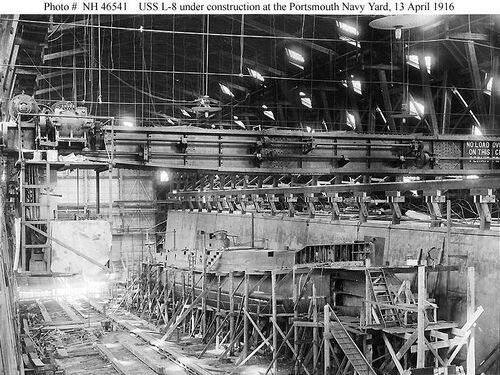
NHHC photo NH 46541 courtesy of the Naval History & Heritage Command.
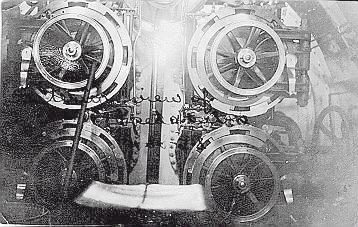
Photo from the private collection of Ric Hedman.

Photo from the private collection of Ric Hedman.
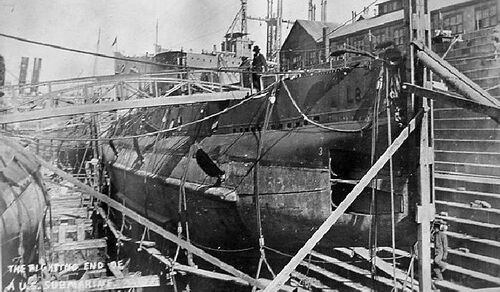
U.S. Navy photo.
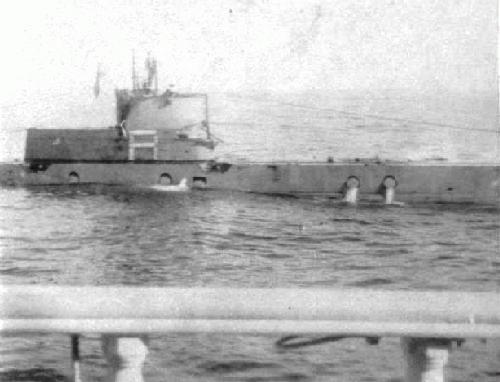
Photo contributed by Clifford Chapski. His grandfather, Alfred G. Benjamin, took this photo while serving aboard the USS Charles Whittemore.
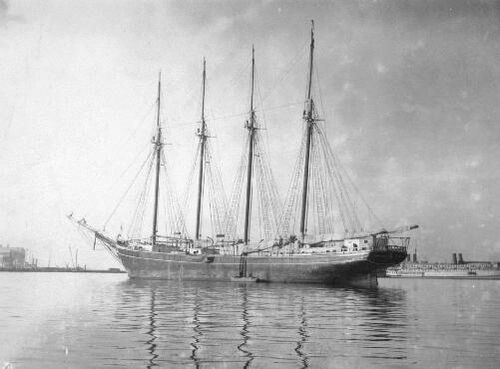
Photo contributed by Clifford Chapski. His grandfather, Alfred G. Benjamin, took this photo while serving aboard the USS Charles Whittemore.

L-8 ended its life as a target for tests of the new and highly secret Mk 6 magnetic exploder, later to gain infamy in WWII. For this test the Navy's Bureau of Ordnance took the ex-L-8 and moored her in Narragansett Bay off Newport, R.I. A Mk 8 torpedo equipped with a prototype of the new exploder was then fired from a barge. As can be seen from this May 26, 1926 aerial photo, the weapon passed directly underneath the sub, exactly as it was supposed to. However, the exploder failed to detect the boat's magnetic field and did not detonate the warhead. This should have been a warning that something was amiss. But the scientists and engineers on the development team and their leadership at the Bureau of Ordnance dismissed the failure as a fluke and they lined up for a second shot.
Photo NH 88457 courtesy of NHHC.
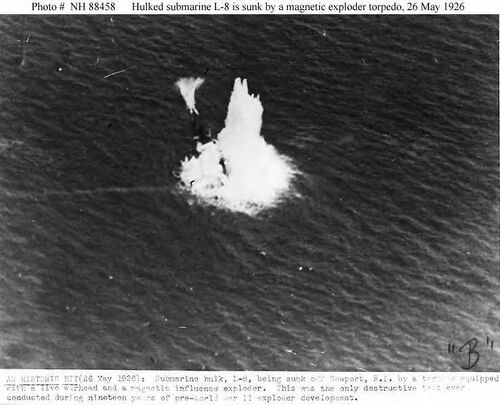
A short time after the first shot (shown above) the team was ready for another try on that fateful day of May 26, 1926. This time the shot was successful and the ex-L-8 was destroyed in a massive blast. The development team took this a proof that the concept worked and they pushed the Mk 6 exploder into production. No other at-sea testing was ever conducted at any location. Congratulating themselves on their brilliance and convinced of the perfection of their device based on this single test, the Mk 6 exploder was put into production and installed on all new Mk 13, 14 and 15 torpedoes produced at Newport. In actuality, the exploder had some serious technical flaws and it failed miserably in combat in WWII. It was a major factor in the near impotency of our submarines in the early days of the war.
Photo NH 88458 courtesy of NHHC.
Page created by:
Ric Hedman & David Johnston
1999 - 2023 - PigBoats.COM©
Mountlake Terrace, WA, Norfolk, VA
webmaster at pigboats dot com
